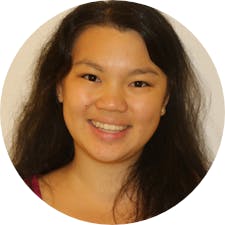Last fall, I was hosting a high school senior in my dorm for an overnight campus visit. She had already submitted her early decision application before visiting campus, so I thought I didn't have to do much more to convince her to come.
The next morning over breakfast, she asked me, "Is UNC more diverse than Duke?"
Aside from the fact that she mentioned the school whose name I typically only said after "go to hell," I was confused.
"Uh…diverse in what sense?"
"Why are there so many Asians here?" (She was Black.)
After her visit, I had found out that she retracted her application to Duke. It's not fair to say that the Asian and Asian American students were the only reason she chose not to apply to Duke anymore, but I still can't shake the feeling that I must have been a bad host. I'm still not sure how to process the fact that someone wouldn't want to go to a school because there were too many people who looked like me.
(For the record, Duke's class of 2020 is 28 percent Asian/Asian American/Pacific Islander, 12 percent Black/African American, 10 percent Latino/Hispanic and 50 percent White. UNC-Chapel Hill's class of 2020 is 14 percent Asian and 71 percent White.)
As 28 percent, 28 percent, 30 percent and 27 percent of the classes of 2020, 2019, 2018 and 2017, respectively, Asian and Asian American students make up plenty of the student body who tents or lives on Central Campus, many of those who actually end up pre-med at the end of 4 years and, according to the admissions page, just a bit less than the 2,000 seats in the Duke libraries. But it seems like these topics have a much larger presence on campus than going to Duke as an Asian or Asian-American student. To be fair, tenting, living on Central, being pre-med and going to the library are all conscious choices that students can choose to do or not do. Race is notably one of those things that is assigned to you at birth.
And while I would secretly enjoying ranting about how the conversation has, Chronicle archives suggest otherwise.
In 1993 (over 23 years ago), the President-elect of the Asian Student Association wrote about how he wanted to move away from the perception that ASA was simply "a group of 'cliquey' Asians who contribute little to the Duke community."
In 2000, The Chronicle published a letter titled "Chronicle exhibits discrimination against Asians" where a student wrote "I challenge The Chronicle to publish this letter to show just how marginalized Asian-Americans are in this university, devoid of power and representation, denied the opportunity to address and discuss important issues" after they had failed to cover a talk given a professor about discrimination faced by Asian-Americans.
A year later, in 2001, the president of ASA was quoted saying that "most Asians don't pick Duke as their first choice, since the atmosphere in the South is predominantly white." Duke was only 13 percent Asian and Asian American at this point—less than half of what it is now.
And in explaining why it’s so difficult to overcome preconceived stereotypes, this Chronicle column entitled “Erasing Race,” written in 2011, explains it best:
“I wanted to say that the stereotypes confined Asians into a box that stripped us of any other characteristics. But I didn’t want to fall into the indignant-Asian-screaming-her-head-off stereotype. So I didn’t say anything. And instead, I became the meek-little-docile-Asian-girl stereotype.”
I’m writing about the Asian and Asian-American community because I am Asian-American myself, but I would think that the same issues of trying to outrun stereotypes, of being perceived as self-segregating, of feeling the need to "pick sides," of feeling left out of the conversation, of not quite feeling like one of them.
A 2005 Towerview article about multiculturalism brings up an interesting point. It starts off by interviewing Serena Wang, a Tri-Delta member who called herself the "poster child for sell-out Asian banana" (yellow on the outside, white on the inside) who says: “When I did hang out with [Asians], I felt I could be more at ease, but it was almost like taking them for granted, like they should accept me regardless, as opposed to when I hung out with my greek team. There was always a sort of unsaid tension where I’m expected to be carried a certain way because I am the novelty, the token.”
Later, the author quotes Leo Ching, chair of the Asian and African Languages and Literature department at the time, as saying, “The problem with multiculturalism is that it promotes the idea that ‘everybody is different from me.’ That’s the problem. ‘Everybody is different except me or my group.’”
I could have shared more personal anecdotes, like how I get confused with the Other Chinese-American Girl Named Amy Who Is Also From Houston Who Also Lives In A Single Next Door To Mine And Whose Birthday Is A Week After Mine, or how I found myself subconsciously counting the number of Asians I saw in each SLG during rush, but maybe focusing exclusively on the divides that make me and my experiences different isn’t the best option. Neither is pretending like these differences don’t exist. Maybe my p-Frosh was simply expressing an underlying sentiment that many students are unwilling to mention when she called out the overrepresentation of Asian and Asian-American students at Duke. Until these conversations become normalized, maybe they will only be present in snippets of Chronicle archives.
Amy Fan is a Trinity first-year. Her column, "fangirling" runs on alternate Tuesdays.
Get The Chronicle straight to your inbox
Signup for our weekly newsletter. Cancel at any time.

Amy Fan is a Trinity senior. Her column, "fangirling," runs on alternate Thursdays.
